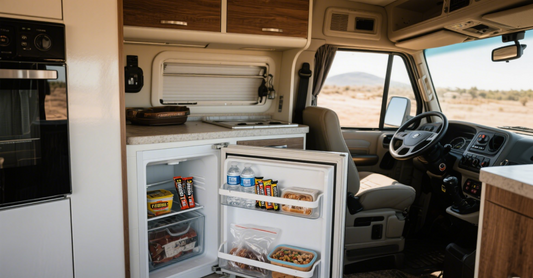How To Install a 36V or 48V Lithium Battery In Your Golf Cart
When you upgrade your golf cart lithium battery to 36V or 48V, you can significantly improve the performance and efficiency of your golf cart, solving common problems such as high maintenance costs, frequent replacement, and compatibility with different golf cart brands such as Club Car, EZGO and Yamaha.
Compared with traditional lead-acid batteries, lithium batteries, especially lithium iron phosphate (LiFePO4), have longer service life, lighter weight, faster charging speed and lower maintenance costs.
Whether you are using your golf cart for personal or team use, in this article, Temgo will guide you on how to ensure the correct installation and use of 36V 100Ah, 36V 105Ah or 48V 100Ah lithium batteries to prevent improper installation from causing problems or battery damage in subsequent golf cart operation.


Benefits of Upgrading to a Lithium Battery for Golf Carts
Unlike lead-acid batteries, which have a lifespan of 3-5 years, 36V or 48V lithium batteries have a lifespan of up to 10 years, reducing replacement frequency and cost, which is critical for golf clubs operating brands such as Club Car or EZGO.
They are lighter (50-70 LBs compared to 100-150 LBs for lead-acid batteries), significantly increase cart speeds, extend range, and reduce wear on components such as motors and suspension, making them ideal for hilly courses.
And 36V 105Ah or 48V 100Ah lithium batteries typically charge in 3-5 hours, compared to 8-12 hours for lead-acid batteries, minimizing downtime during busy events. They also support up to 80% deep discharge, compared to 50% for lead-acid batteries, without causing damage to the battery itself, so each charge provides more usable energy.


If you are a golf club with 20 golf carts, you can save thousands of dollars per year by using lithium batteries. This is because it reduces your maintenance workload (no watering or frequent inspections) and eliminates downtime during charging.
With fewer replacements and lower labor costs, the total cost of ownership can be reduced by 40% over the battery's life. Compared with lead-acid batteries, lithium batteries have a longer life and are green and recyclable, making them more sustainable and in line with the environmental goals of modern golf clubs.
The advanced BMS in the lifepo4 lithium battery also prevents the battery from overcharging and overheating, ensuring safe use, which makes models such as the 48V 100Ah reliable in high-usage scenarios such as resort courses or daily rentals.
| Type | Lithium-ion (LiFePO4) | Lead-Acid |
|---|---|---|
| Lifespan | Up to 10 years | 3–5 years |
| Weight | 50–70 LBs | 100–150 LBs |
| Charging Time | 2–4 hours | 8–12 hours |
| Depth of Discharge | Up to 80% | Up to 50% |
| Maintenance | Low (no water checks) | High (regular water checks) |
Looking to buy golf cart lithium batteries for your fleet? Visit the Temgo shop or contact the Temgo team for a consultation to find out the best lithium battery compatible with your golf cart model.
Preparing to Install a 36V or 48V Lithium Battery in Your Golf Cart
Proper preparation ensures smooth and safe installation of 36V or 48V lithium batteries on golf carts of different brands.
First, confirm that the lithium battery (such as 36V 100Ah, 36V 105Ah or 48V 100Ah LiFePO4 models) matches the voltage and size of your golf cart. Check your golf cart manual or contact the manufacturer (such as Club Car, EZGO, Yamaha) to verify compatibility.
Because older models may require upgraded controllers to handle the voltage curve of lithium batteries. For example, Club Car Precedent models typically use 48V 100Ah batteries, while EZGO RXV models may require specific BMS configurations for optimal performance. Yamaha G29 models typically support 36V 100Ah or 105Ah batteries, but older models may require updated wiring. Signs of an incompatible controller include voltage fluctuations, error codes, or inconsistent power output, and upgrading the controller can cost between $200 and $500, depending on the brand.
(For specific compatibility details, visit manufacturer websites such as Club Car or EZGO, or consult a technician to avoid costly mistakes.)
Gather the following tools and materials:
• Tools: Wrench or socket wrench set (for terminal bolts), flat-blade and Phillips screwdrivers, wire cutters/strippers, multimeter (for voltage testing), insulated gloves, and safety glasses.
• Materials: 36V or 48V lithium battery, battery cable (if replacement is required), terminal protector or dielectric grease, lithium-compatible charger, and optional battery carrying strap (for removing heavy lead-acid batteries).
• Optional: Battery disconnect switch (to prevent parasitic leakage during storage) and fuse for series connection.


a. Please record your current battery setup, take clear photos and draw a wiring diagram to trace the connections, especially for fleets of multiple golf carts in series (For example Club Car, EZGO, Yamaha).
b. Turn off the golf cart, unplug all power plugs, and switch it to tow mode if applicable.
c. Inspect the battery compartment for corrosion or debris and clean it with a baking soda and water solution (1:10 ratio) to neutralize the acid residue from the old lead-acid battery. This ensures your new lithium battery has a clean working space, reducing the risk of connection problems.
If you encounter problems during this process, you can contact the Temgo professional team to answer your questions!
Safety Precautions for Installing a Lithium Battery in Your Golf Cart
When installing lithium batteries in your golf cart, it is very important to take the following safety measures to protect yourself and your equipment:
1. Always wear insulating gloves and goggles to prevent the risk of electric shock and acid that may remain from old batteries.
2. Make sure the golf cart is completely turned off and disconnected from any charging power source to prevent electric shock.
3. Work in a dry, well-ventilated area away from flammable materials as batteries will release gas during handling.
4. Use insulated tools to reduce the risk of short circuits and keep metal objects such as wrenches away from battery terminals to avoid accidental contact.


For lithium batteries commonly used in golf carts, the Temgo team recommends single use and does not recommend connecting multiple batteries in series. If you need to extend the battery life, please strictly follow the industry standard recommendations and install a fuse between the battery positive terminal and the main positive cable to prevent overcurrent.
Although lithium iron phosphate batteries are safer than other lithium chemistry batteries, you still need to ensure that the battery management system is in normal operation to prevent the rare risk of overheating. If the BMS displays an error code during installation, consult the manufacturer's manual for troubleshooting immediately.
When removing an old battery, disconnect the negative terminal first and connect the negative terminal last during installation to minimize the risk of sparks. Before powering on, carefully check all connections to ensure they are secure and properly aligned. (If you need to expand the golf cart battery, it is recommended that you consult a professional first to avoid safety or battery damage caused by improper operation)
Removing Old Batteries from Your Golf Cart
Because old lead-acid batteries are heavy and potentially dangerous, use caution when removing them. Verify that the golf cart is off, unplugged, and in tow mode (if applicable). Remove all battery covers to access the battery compartment. Using a wrench, disconnect the main negative cable (the one not connected to other batteries) first, then the main positive cable to prevent short circuits. Then, disconnect all inter-battery cables that connect multiple lead-acid batteries in series.


Carefully remove each old battery, which can weigh 50-75 LBs, using a battery carrying strap to avoid strain or spillage. Place the battery on a stable surface to prevent tipping or leaking of the corrosive electrolyte. Clean the battery compartment with a baking soda and water solution (1:10 ratio) and wipe off corrosion with a cloth or brush. Rinse with clean water and dry thoroughly to make a clean space for the new 36V or 48V lithium battery.
Dispose of the lead-acid battery properly. Contact your local waste management agency or golf cart dealer for certified recycling centers. Check local regulations to avoid fines or environmental damage.
Installing a 36V or 48V Lithium Battery in Your Golf Cart
After removing the old battery, carefully install the 36V or 48V lithium battery. Place it into the battery compartment, making sure it fits securely. Verify that the battery size matches the size of the battery compartment (Club Car models typically come with a standard 48V compartment, while the EZGO RXV may need to be adjusted to better fit a 48V 100Ah battery and the Yamaha G29 may need spacers for a 36V 105Ah battery). If necessary, adjust the tray dividers to prevent movement, as loose batteries may damage connections during operation.
For carts that require multiple batteries (for example, a 48V 100Ah system requires four 12V batteries), connect them in series:
a. Connect the positive terminal of one battery to the negative terminal of the next battery using high-ampere rated 4 AWG wire or the manufacturer's connection kit.
b. Make sure all batteries are fully charged before connecting to maintain balance, as uneven charging can reduce performance.
c. Tighten the connections to 10 ft LBs using a torque wrench, ensuring firm contact but not overtightening.
d. Connect the main positive cable to the cart's positive terminal first, then connect the main negative cable to the designated negative point or frame.
e. Mark the cables with tape or a marker to facilitate future maintenance.
Verify all connections according to the wiring diagram or battery manufacturer's instructions. Common installation errors include:
a. Reverse polarity (positive and negative cables swapped) or loose connections, which can cause erratic performance or no power, especially in EZGO or Yamaha models with sensitive controllers.
b. If the cart will not start, use a multimeter to confirm the voltage at each connection point and ensure that the BMS is active.
c. For added safety, install a battery disconnect switch near the battery compartment to cut power during storage to prevent parasitic leakage.
Check your 36V or 48V lithium battery manual or contact the supplier for brand-specific wiring instructions to ensure the best setup.
Testing Your Golf Cart Lithium Battery Installation
After the battery is installed, you will also need to test to confirm that your 36V or 48V lithium battery has been installed correctly and can operate properly on different brands of golf carts. You will need to:
a. Start the golf cart and listen for any unusual sounds, such as humming or clicking, which may indicate a loose connection or electrical problem.
b. Use a multimeter to check the battery voltage to ensure it is as expected (for example, a fully charged 48V 100Ah lithium battery voltage is 50.4-51.2V).
c. Use a lithium battery compatible charger to confirm that the battery is charging properly and check for error codes on the cart's dashboard or BMS display (for example, in Club Car or EZGO systems, a green LED usually indicates normal operation).


In addition to the above basic tests, the Temgo team recommends that you can also test the use of the golf cart in different terrain environments:
a. Drive the golf cart under load, such as uphill or carrying passengers, to confirm performance improvements, such as better acceleration or climbing ability, which is critical for golf course operations during tournaments.
b. If a problem occurs, double-check that the connections are secure and polarity is correct, and consult the battery manual for BMS error code instructions specific to your cart brand.
After completing the golf cart lithium battery installation basics and performance test, if there are post-installation problems, such as reduced range or motor overheating, take the following steps:
1. Low power output: Check the motor controller settings, as some Club Car or Yamaha models require reprogramming of the lithium battery. Use a multimeter to confirm voltages (For example 48V system voltage below 50V indicates a problem).
2. BMS off: A red LED or error code on the BMS may indicate overcurrent or overheating. Disconnect the battery and consult the manufacturer's troubleshooting guide.
3. Reduced range: Make sure the batteries are balanced. For EZGO carts, make sure the charger is set to Li-Ion mode to avoid undercharging. Contact your battery supplier or cart manufacturer (For example Yamaha Golf Car) for model-specific diagnostics to quickly resolve the problem and prevent battery wear.
Connecting 12V Accessories to Your Lithium Battery Golf Cart
Many golf carts use 12V accessories, such as lights or GPS systems, which require a 36V/48V to 12V converter to maintain battery balance in a 36V or 48V lithium battery system. Choose a converter with a capacity at least 20% higher than the total current of the accessories (For example a 15A converter for a 12A lighting system) to prevent overload. Follow the manufacturer's instructions and mount the converter in a ventilated area near the battery compartment to avoid overheating. Connect it to the positive and negative terminals of the battery, making sure the connections are secure and insulated.
Improper accessory connections can reduce the efficiency of your 36V 100Ah or 48V 100Ah lithium battery, so double-check the setup. For fleet operators managing Club Car or EZGO golf carts, standardized converters can simplify maintenance. Ask your battery supplier to recommend a converter that is compatible with your 36V or 48V lithium battery to ensure seamless integration.
Monitoring And Maintenance After Installing Golf Cart Lithium Batteries
While lithium batteries are low maintenance or even zero maintenance, you can maximize battery life by taking proactive care of them.
a. Get accurate voltage and charge readings by equipping your lithium battery with a display or using a lithium-compatible battery monitor, as lead-acid meters will misread the discharge curve of lithium iron phosphate. A display showing 20%state of charge indicates that the battery needs to be recharged soon to avoid deep discharge.
b. For fleets, schedule monthly voltage checks (For example 3.2-3.6V per cell for lithium iron phosphate) and quarterly terminal cleaning to ensure consistent performance of your Club Car, EZGO, or Yamaha kart during high-use periods such as championships.
c. Apply dielectric grease to the terminals to prevent corrosion, especially in humid golf course environments.
d. It is recommended to use a charger that is compatible with the corresponding lithium battery model to avoid overcharging, which may damage the lithium battery's BMS.
e. Charge the battery above 32°F (0°C) to maintain capacity, and discharge as much as possible before recharging to optimize cycle life.
f. Check the battery regularly for physical damage, such as dents or loose connections, and fix any problems promptly.
g. For seasonal storage, keep the battery at 50-70% charge in a cool, dry place.
h. If your battery includes a BMS with firmware, check for updates from the manufacturer to improve performance and safety.
Are you looking for a lithium battery equipped with a display? Temgo offers you a one-stop kit for golf carts (including: 48V 100Ah lithium battery, battery status indicator, 56.8V 18A charger, external control switch and other accessories).
For a more detailed maintenance guide, read more: How to Maintain Your Lithium Golf Cart Battery
Ready to Upgrade Your Golf Cart with a Lithium Battery?
Upgrading to a 36V or 48V lithium battery can improve your golf cart performance and reduce operating costs for your club or fleet. Visit the Temgo shop today to learn about compatible lithium iron phosphate battery options for Club Car, EZGO or Yamaha models. For complex installation or compatibility issues, contact Temgo's professional technicians to ensure a seamless upgrade. Start enjoying longer run time, faster charging and less maintenance today!


